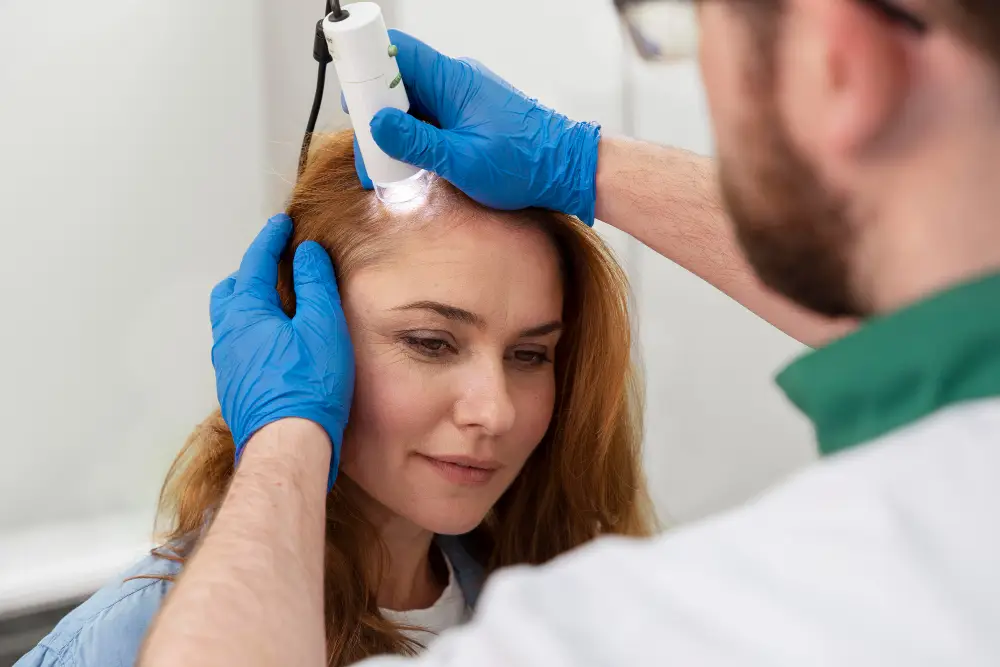
Key Takeaways
- Chronic back pain significantly impacts quality of life, often requiring a multifaceted approach beyond conventional therapies.
- Regenerative medicine, including stem cell treatment, offers a pathway focused on supporting the body’s intrinsic repair processes, distinct from traditional surgical or pharmaceutical interventions.
- Colombia boasts a robust healthcare system, with specific regulatory oversight from entities like INVIMA, ensuring a framework for ethical medical tourism.
- Pereira, Colombia, offers a unique combination of advanced medical infrastructure, a supportive recovery environment, and patient-centric care.
- Understanding the full patient journey—from initial inquiry to post-procedure support—is crucial for individuals considering international medical care.
- Transparent information and ethical patient advocacy are paramount when exploring innovative treatments like stem cell therapy for back pain.
Stem Cell Treatment for Back Pain: A Comprehensive Guide to Your Options
Chronic back pain is more than just a physical discomfort; it’s an invisible burden that can diminish quality of life, limit activity, and erode hope. For countless individuals worldwide, the search for lasting relief becomes a long and often frustrating journey. While conventional treatments offer various pathways, many are left seeking alternatives that address the root causes of their pain rather than merely managing symptoms. This comprehensive guide explores stem cell treatment as a regenerative orthopedic therapy for back pain, focusing on what it entails, how it differs from traditional approaches, and the distinct advantages of considering care in Pereira, Colombia.
As a lead medical communicator and patient advocate with the Regencord team in Pereira, Colombia, our aim is to empower you with clarity. We understand the anxieties—the fears of unproven therapies, the logistical concerns of international travel, and the overwhelming amount of information. This resource is designed to navigate these questions transparently, providing source-verified insights to help you make a truly informed decision about your health journey.
Table of Contents
- The Stakes: Critical Implications of Chronic Back Pain
- The Conventional Approach in North America: Navigating Traditional Pathways
- Understanding Regenerative Orthopedic Therapy: The Role of Stem Cells
- The Pereira, Colombia Advantage: A Holistic Approach to Back Pain Care
- The Regencord Clarity Pathway Checklist
- Our Regenerative Philosophy & Approach
- Overcoming Common Hesitations: Why Seeking Clarity is a Strategic Advantage
- Glossary of Key Terms
- Frequently Asked Questions (FAQ)
- Your Next Step: Discovering Your Pathway to Clarity
- Disclaimer
1. The Stakes: Critical Implications of Chronic Back Pain
Back pain is a global health challenge, with the World Health Organization (WHO) identifying it as a leading cause of disability worldwide. It’s not just an ache; it’s a complex condition that can profoundly impact physical function, mental well-being, and economic productivity. For many, chronic back pain becomes a relentless companion, affecting everything from daily tasks to relationships and career aspirations.
The progression of untreated or inadequately managed back pain can lead to a cycle of reduced mobility, muscle weakness, and reliance on pain medication. Studies highlighted by the NIH consistently show that persistent pain can contribute to anxiety, depression, and a significant decrease in overall life satisfaction. It impacts sleep, mood, and the ability to engage in activities once enjoyed. The emotional toll of chronic pain is often as debilitating as the physical, creating a deep need for solutions that offer genuine, sustainable relief.
This reality underscores the critical importance of exploring all available, ethically sound pathways. Patients are often exhausted from years of searching, facing a landscape of fragmented information and sometimes, unfulfilled promises. The decision to explore alternative or innovative treatments is often born out of this profound need for a different outcome.
2. The Conventional Approach in North America: Navigating Traditional Pathways
In many North American healthcare systems, the journey for back pain relief often follows a structured, yet sometimes slow and incremental, path. Patients typically begin with conservative management, which may include:
- **Physical Therapy:** Designed to strengthen core muscles, improve flexibility, and correct posture.
- **Medication:** Over-the-counter pain relievers, anti-inflammatory drugs, muscle relaxants, and in some cases, prescription opioids (though their long-term use for chronic back pain is increasingly scrutinized due to dependency concerns, as highlighted by health authorities like the FDA).
- **Injections:** Epidural steroid injections or nerve blocks to temporarily reduce inflammation and pain.
- **Surgery:** For severe cases, or when conservative treatments fail, options like discectomy, laminectomy, or spinal fusion may be considered. These are generally seen as a last resort due to their invasive nature, recovery time, and potential for complications.
While these conventional treatments, regulated by bodies such as the FDA and Health Canada, have their place and can provide relief for many, they sometimes fall short for individuals with persistent or degenerative conditions. Patients may face long waiting lists for consultations or procedures, especially for non-emergency care. The focus can often be on symptom management rather than addressing the underlying tissue degradation or inflammatory processes. This can leave many feeling frustrated, facing ongoing pain, and seeking more comprehensive or restorative options, leading them to explore international medical tourism and regenerative orthopedic therapy.
3. Understanding Regenerative Orthopedic Therapy: The Role of Stem Cells
Regenerative orthopedic therapy represents a paradigm shift from conventional approaches. Instead of solely managing symptoms or performing invasive structural repairs, this field focuses on supporting the body’s innate capacity for self-repair and healing. For back pain, this often involves targeting conditions such as degenerative disc disease, facet joint arthritis, or ligament injuries.
Stem cell treatment, a prominent area within regenerative medicine, involves using cells that have the unique ability to develop into various cell types and to release growth factors and anti-inflammatory molecules. The goal is to modulate inflammation, support tissue repair signals, and potentially promote a healthier microenvironment within damaged spinal structures. It’s important to understand that this is a continually evolving field of study, with ongoing research documented in PubMed-indexed peer-reviewed journals and on platforms like ClinicalTrials.gov, exploring its full potential and optimal applications.
How Stem Cells May Support Spinal Health:
- **Modulating Inflammation:** Chronic inflammation is a significant driver of back pain and tissue degradation. Stem cells can release anti-inflammatory factors, potentially reducing pain and preventing further damage.
- **Supporting Tissue Regeneration:** While not a “cure,” stem cells are believed to encourage the body’s natural repair mechanisms by stimulating local cells and promoting the growth of new, healthy tissue.
- **Pain Signal Modulation:** Beyond direct repair, some studies suggest stem cells can influence nerve pain signals, leading to pain reduction.
The distinction between regenerative approaches and traditional surgery is crucial. Regenerative therapies are typically less invasive, aiming to preserve natural anatomy and function, and often involve significantly shorter recovery times compared to major spinal operations. It offers a potential pathway for those seeking to avoid surgery or who have not found adequate relief from other conservative methods. This is not about ‘curing’ conditions with a single intervention but supporting the body’s capacity to heal over time.
4. The Pereira, Colombia Advantage: A Holistic Approach to Back Pain Care
When exploring innovative medical treatments, the choice of location is as significant as the choice of therapy. Pereira, Colombia, stands out as a compelling destination for individuals seeking regenerative orthopedic care for back pain. It offers a unique blend of high-quality medical infrastructure, a patient-centric environment, and a supportive cultural backdrop.
Colombia’s Robust Healthcare Landscape:
Colombia has earned a strong reputation for its healthcare system, which is recognized internationally for its standards and accessibility. The Pan American Health Organization (PAHO) has frequently highlighted advancements in the region’s medical capabilities. Key aspects that contribute to this reputation include:
- **Advanced Medical Facilities:** Hospitals and clinics in major Colombian cities, including Pereira, are often equipped with modern technology and staffed by medical professionals who have received training both domestically and internationally.
- **Strict Regulatory Oversight:** The Colombian Ministry of Health and INVIMA (National Food and Drug Surveillance Institute of Colombia) rigorously regulate medical procedures, including regenerative therapies. This oversight ensures that clinics adhere to established safety protocols and ethical guidelines, providing a framework for patient protection.
- **Highly Qualified Medical Professionals:** Colombia boasts a large pool of talented and experienced physicians, many of whom are actively engaged in international medical conferences and research, staying abreast of global advancements in fields like regenerative medicine.
The Unique Contextual Strengths of Pereira for Patient Care:
Pereira, nestled in Colombia’s Coffee Region, offers more than just excellent medical facilities. As our experience at Regencord consistently shows, the healing environment extends beyond the clinic walls. The city’s specific advantages contribute significantly to the overall patient journey:
- **Temperate Climate & Natural Beauty:** Pereira’s mild, spring-like weather year-round provides a comfortable setting for recovery, away from extreme temperatures. The surrounding lush landscapes, coffee plantations, and mountains offer a serene backdrop that can aid in psychological well-being during recovery.
- **Patient-Centric Approach:** Colombian medical culture is often characterized by a warm, empathetic approach. At Regencord, this translates into comprehensive patient advocacy, ensuring clear communication, personalized attention, and support that extends beyond the clinical procedure. This dedication to the patient’s emotional and informational needs transforms an intimidating process into a hopeful pathway.
- **Affordability Without Compromise:** While specific costs are individual, the economic structure in Colombia can often make high-quality medical treatments more accessible than in many Western countries, without sacrificing standards of care. This provides a strategic advantage for patients seeking value.
- **Accessibility and Logistics:** Pereira is well-connected, with an international airport facilitating easier travel. The Regencord team assists with a seamless patient journey, including travel arrangements, accommodation, and local navigation, simplifying the complexities of international medical tourism.
- **Holistic Recovery Environment:** We’ve observed that patients who feel emotionally supported and physically comfortable in their surroundings tend to experience a more positive overall treatment journey. The cultural warmth, nutritious local cuisine, and opportunity for gentle rehabilitation amidst natural beauty enhance the recovery process. This focus on the whole person – mind and body – is integral to what makes Pereira a distinctive choice.
Choosing Pereira for your back pain care means opting for a destination where medical advancement meets genuine compassion and a supportive environment, fostering not just physical recovery but overall well-being.
5. The Regencord Clarity Pathway Checklist
Navigating the options for stem cell treatment for back pain, especially internationally, can feel overwhelming. To simplify this journey and ensure you have all the necessary information, the Regencord team has developed “The Regencord Clarity Pathway Checklist.” This practical resource is designed to guide you through the key considerations and steps, empowering you to make confident decisions.
What The Regencord Clarity Pathway Checklist Helps You With:
- **Understanding Your Condition:** Key questions to ask yourself and your current medical providers about your specific back pain diagnosis and history.
- **Evaluating Treatment Options:** A framework for comparing different therapies, including regenerative approaches, against your personal goals and risk tolerance.
- **Assessing Clinic Credentials:** What to look for in a reputable international clinic, including regulatory compliance (e.g., INVIMA accreditation), physician qualifications, and safety protocols.
- **Financial Transparency:** Guidance on understanding potential costs, what’s included, and what to inquire about regarding payment structures.
- **Travel & Logistics Preparation:** Essential steps for planning your journey, from passport and visa considerations to accommodation and local support.
- **Post-Treatment Expectations:** Understanding the recovery process, follow-up care, and what to anticipate upon returning home.
- **Emotional Preparedness:** Tips for managing the emotional aspects of seeking treatment abroad and maintaining a positive mindset.
This checklist is not a substitute for medical advice but a tool to help organize your thoughts and inquiries. It ensures you arrive at any consultation well-prepared and confident in the questions you need to ask. It demystifies the process, transforming a potentially complex journey into a manageable series of informed steps.
6. Our Regenerative Philosophy & Approach
At Regencord in Pereira, Colombia, our approach to back pain extends beyond just a procedure. We embrace a regenerative philosophy rooted in education, patient empowerment, and ethical transparency. We understand that each patient’s journey with chronic back pain is unique, shaped by individual circumstances, medical history, and personal goals.
Our philosophy is centered on:
- **Patient-First Education:** We believe that the most powerful decisions are informed decisions. Our team is dedicated to providing clear, accessible, and source-verified information about regenerative orthopedic pathways. We explain the scientific basis of treatments, discuss realistic expectations, and ensure you understand the “why” and “how” of any recommended approach.
- **Holistic Well-being:** We recognize that physical health is intertwined with mental and emotional well-being. Our advocacy extends to supporting you through all aspects of your journey – from initial inquiry to post-procedure recovery – considering the environmental, cultural, and personal factors that contribute to a positive healing experience.
- **Ethical Practice & Compliance:** Operating within Colombia’s robust regulatory framework (Colombian Ministry of Health, INVIMA), we are committed to the highest standards of safety and ethical conduct. We never assert unverified clinical superiority or guarantee outcomes. Our focus is on providing care that aligns with established guidelines and emerging research.
- **Personalized Pathways:** There is no one-size-fits-all solution for back pain. Our approach emphasizes a confidential case review process where your specific condition, history, and needs are thoroughly assessed. This allows us to determine if regenerative pathways are suitable for you, and if so, to outline a tailored plan.
- **Transparency in Every Step:** From outlining the patient journey and discussing potential timelines to clarifying costs and addressing logistical concerns, we prioritize open and honest communication. We aim to dismantle common hesitations by providing clarity and building trust, ensuring you feel supported and confident at every stage.
Our goal is to be a trusted resource on your path to finding relief, offering not just a potential treatment, but a partnership in your pursuit of a more active and comfortable life.
7. Overcoming Common Hesitations: Why Seeking Clarity is a Strategic Advantage
The decision to explore new medical avenues, especially internationally, often comes with significant hesitation. It’s natural to feel uncertain, given the personal and financial investment involved. Addressing these concerns directly is a critical part of making an informed choice. Here, we tackle some of the most common barriers patients face and demonstrate why seeking clarity is your most powerful strategic advantage.
Hesitation 1: “Is stem cell treatment for back pain truly effective or just hype? I’m worried about unproven therapies.”
This is a valid concern in a rapidly evolving field. Our approach is grounded in transparency. We acknowledge that while stem cell research is promising and continuously advancing (as evidenced by ongoing studies listed on ClinicalTrials.gov and in PubMed-indexed journals), it’s not a universal “cure.” Instead, we focus on explaining the *mechanisms of action* being studied: how stem cells are thought to modulate inflammation, release growth factors, and potentially support the body’s natural repair processes. We emphasize that Regencord aligns with *research-backed approaches* and operates within a clear regulatory framework set by the Colombian Ministry of Health and INVIMA. Our goal is to guide you toward understanding the scientific basis and appropriate, realistic expectations, moving beyond sensationalized claims to verifiable facts.
Hesitation 2: “Is receiving medical care in Colombia safe or legitimate? I’m concerned about standards and regulation.”
Concerns about international medical standards are common. However, Colombia boasts a robust healthcare infrastructure. The Colombian Ministry of Health and INVIMA enforce stringent regulations for medical facilities and procedures, including those involving regenerative medicine. These accreditations ensure clinics adhere to high safety protocols and ethical guidelines. Many medical professionals in Colombia receive international training, contributing to a high standard of care. By focusing on these verifiable facts—the regulatory oversight, the quality of facilities, and the training of medical teams—we aim to shift the perception from fear of the unknown to an understanding of a well-regulated, high-quality system. Your safety and well-being are paramount, and we are committed to practices that meet global ethical standards.
Hesitation 3: “This sounds too complicated and overwhelming. I wouldn’t know where to start with international travel and medical arrangements.”
The thought of coordinating international travel with medical appointments can indeed feel daunting. This is precisely why a dedicated patient advocacy team is invaluable. At Regencord, our team addresses logistical anxiety directly by outlining a clear, step-by-step patient journey. We assist with everything from initial consultations and medical record review to travel planning, accommodation, and ground transportation in Pereira. Our support transforms the perception of a complex process into a manageable, supported pathway. “The Regencord Clarity Pathway Checklist” (introduced earlier) is one of our tools designed to help you organize information and navigate each step with confidence, emphasizing our role in making your journey as smooth as possible.
Hesitation 4: “What about the cost? Is it truly accessible, or are there hidden fees that will make it comparable to my home country?”
Cost is a significant factor in any medical decision, especially when considering international options. We acknowledge this openly. While specific pricing requires a confidential, individual assessment based on your unique condition, international care in countries like Colombia can often offer a more accessible financial pathway compared to some Western domestic systems. This is due to different economic structures, *without compromising the quality of care*. Our commitment is to transparent pricing models. We encourage a confidential case review not only to assess your medical candidacy but also to provide a clear, detailed understanding of all-inclusive aspects of the potential treatment pathway, avoiding hidden fees and allowing you to make a financially informed decision.
By seeking clear, verified answers to these hesitations, you transform uncertainty into informed confidence, positioning yourself strategically to explore all available pathways for managing your back pain.
8. Glossary of Key Terms
Understanding the terminology is essential when exploring new medical options. Here’s a brief glossary of terms related to stem cell treatment for back pain:
- **Adipose-Derived Stem Cells (ADSCs):** Stem cells extracted from a patient’s own fat tissue, often used in regenerative therapies.
- **Bone Marrow Aspirate Concentrate (BMAC):** A solution containing stem cells and growth factors, obtained from a patient’s own bone marrow.
- **Chronic Back Pain:** Pain in the back that persists for 12 weeks or longer, even after an initial injury or underlying cause has been treated.
- **Degenerative Disc Disease (DDD):** A condition where the spinal discs, which cushion the vertebrae, deteriorate over time, leading to pain and other symptoms.
- **Facet Joint Arthritis:** Inflammation of the facet joints, which connect the vertebrae, causing back pain and stiffness.
- **INVIMA:** Instituto Nacional de Vigilancia de Medicamentos y Alimentos (National Food and Drug Surveillance Institute of Colombia), the regulatory body for health products in Colombia.
- **Regenerative Medicine:** A field of medicine focused on developing treatments to repair, replace, or regenerate damaged or diseased cells, tissues, or organs.
- **Regenerative Orthopedic Therapy:** Specific applications of regenerative medicine aimed at musculoskeletal conditions, such as joint pain, ligament injuries, and spinal issues.
- **Stem Cells:** Undifferentiated cells that have the potential to develop into many different cell types in the body, and serve as an internal repair system.
9. Frequently Asked Questions (FAQ)
Here are answers to common questions patients have when considering stem cell treatment for back pain, particularly in an international setting like Pereira, Colombia.
Q: What kind of stem cells are used for back pain treatment?
A: The specific type of stem cells utilized can vary, but commonly include autologous cells—meaning they are derived from your own body, such as Adipose-Derived Stem Cells (ADSCs) from fat tissue or cells from Bone Marrow Aspirate Concentrate (BMAC). The choice depends on individual patient factors and the specific regenerative pathway being considered, always within established ethical and regulatory guidelines.
Q: How long does the recovery process take after stem cell treatment for back pain?
A: Recovery times vary significantly depending on the individual, the specific procedure, and the extent of the condition being addressed. Regenerative therapies are generally less invasive than surgery, leading to shorter initial recovery periods. However, the regenerative process itself takes time, often several weeks to months, as the body works to modulate inflammation and support tissue repair. Our team provides personalized guidance on post-procedure care and expectations.
Q: Do I need a referral to consider treatment with the team at Regencord?
A: While a referral from your local physician can be helpful for providing comprehensive medical history, it is not always a mandatory requirement to initiate a confidential case review with the team at Regencord. We encourage you to contact us directly to discuss your situation and begin the assessment process.
Q: What regulatory standards apply to stem cell treatments in Colombia?
A: In Colombia, medical treatments, including regenerative therapies, are regulated by the Colombian Ministry of Health and INVIMA. These bodies set forth specific guidelines for the ethical and safe practice of medicine, ensuring that facilities and procedures meet national standards. We operate strictly within these regulatory frameworks, prioritizing patient safety and transparency.
Q: How does the patient advocacy team at Regencord assist with travel logistics?
A: Our patient advocacy team is dedicated to making your international medical journey as smooth as possible. We can assist with recommendations and guidance on flight arrangements, local transportation within Pereira, and comfortable accommodation options. We also provide support with understanding local customs and navigating any language needs, ensuring you feel supported from your arrival to your departure.
Q: What should I expect during a confidential case review?
A: A confidential case review is a crucial first step. During this process, our team will carefully assess your medical history, diagnostic images, and current symptoms. This review helps us determine if you are a potential candidate for the regenerative medicine pathways available through the team at Regencord. It’s also an opportunity for you to ask all your questions and gain a clear understanding of what a potential treatment journey might involve, including realistic expectations and any associated considerations.
Your Next Step: Discovering Your Pathway to Clarity
The journey to lasting back pain relief often requires exploring every ethical and informed pathway. If you’re seeking alternatives to conventional approaches, or if you simply need comprehensive, transparent information to make a decision, the team at Regencord in Pereira, Colombia, is here to guide you.
We are committed to providing patient-first education, holistic support, and a clear understanding of regenerative orthopedic options for back pain. Our goal is to empower you with the knowledge and confidence to take the next step towards improving your quality of life.
Discover if you are a candidate for the regenerative medicine pathways available through the team at Regencord in Pereira, Colombia.
Disclaimer: This article is intended for educational purposes only and should not be considered medical advice. The content reflects the patient-centric ethos of the Regencord team. No medical claims are made, and no outcomes are guaranteed. Regenerative medicine is an evolving field, and individual results may vary. All decisions regarding medical treatment should be made in consultation with a qualified healthcare provider. Veris Salus LLC serves as a marketing and patient-coordination facilitator for Regencord in Pereira, Colombia, and does not provide medical services.



